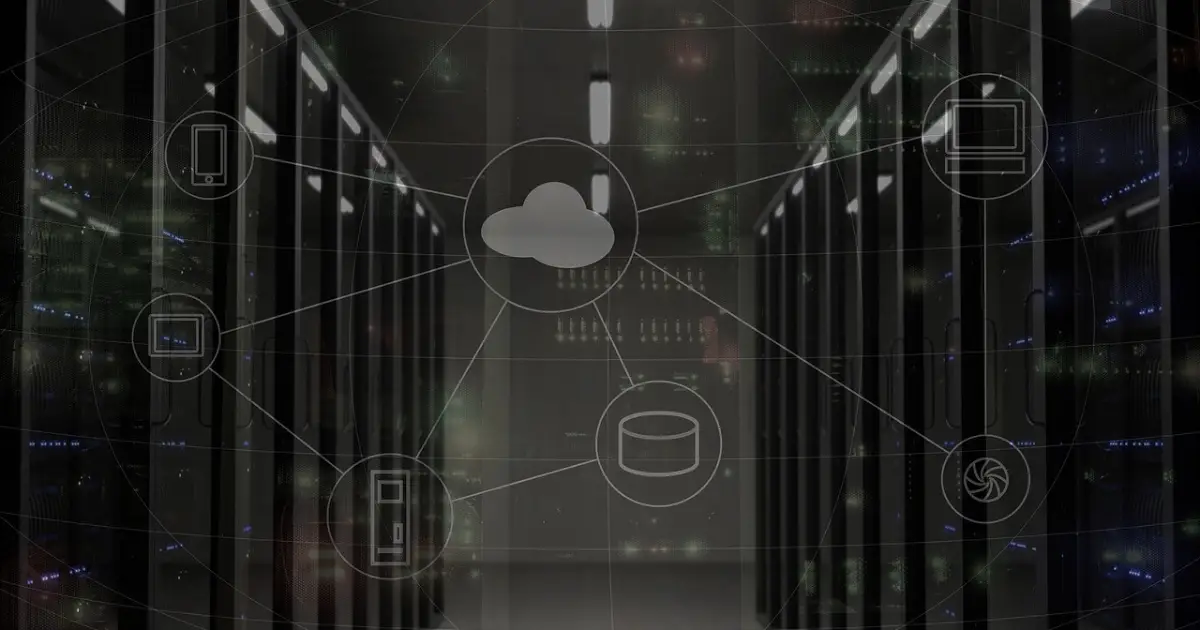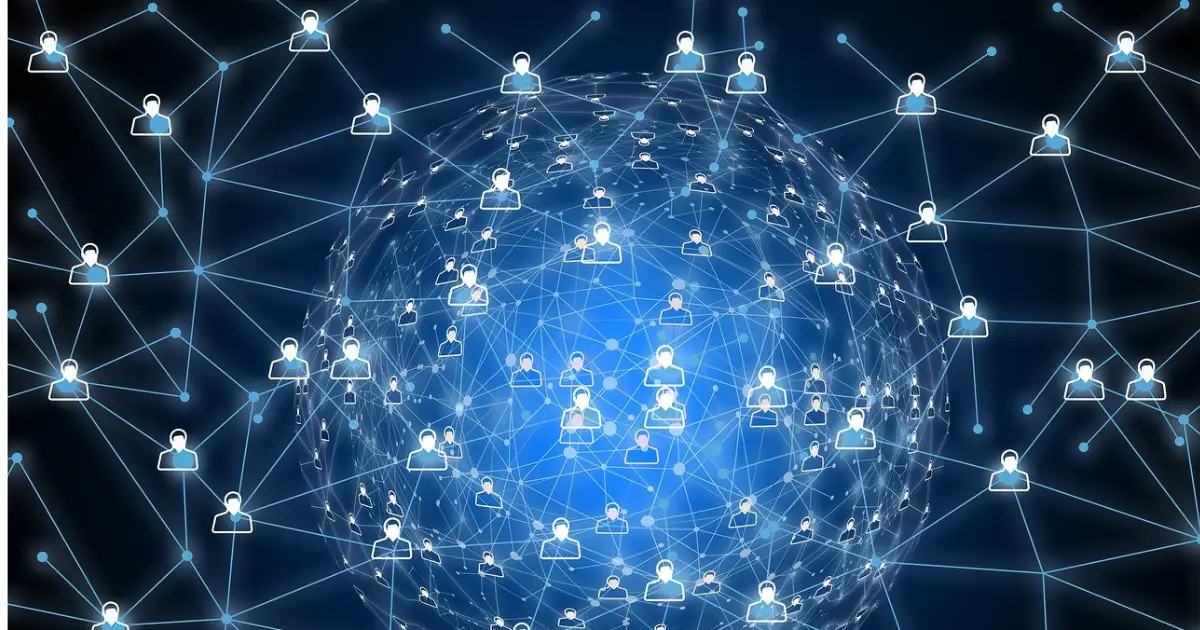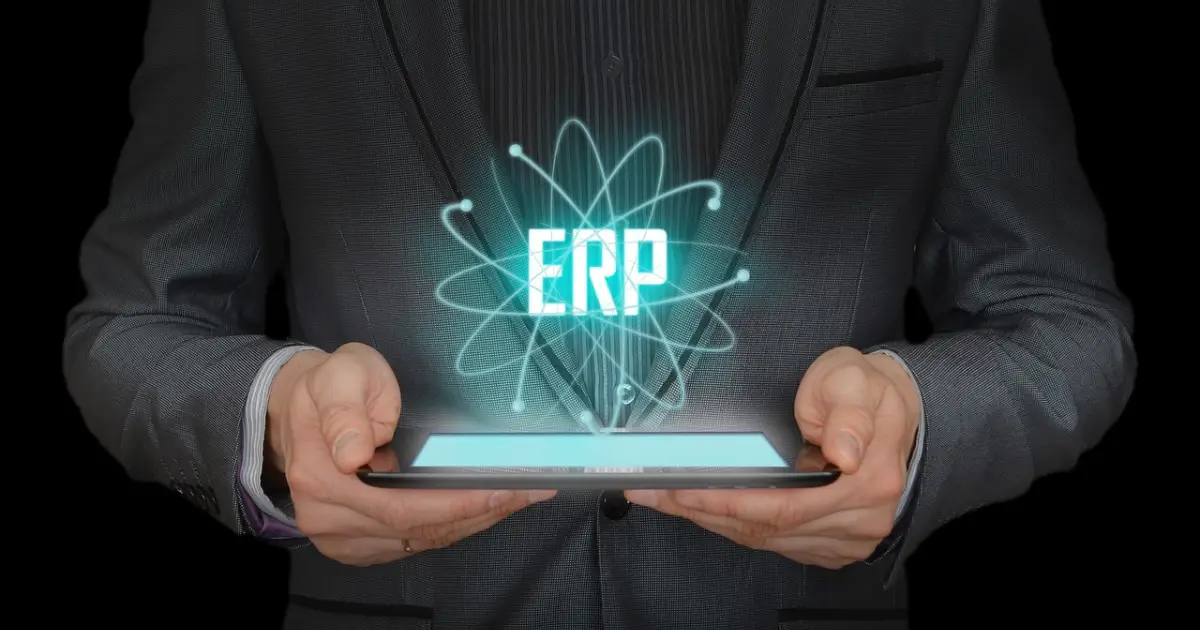focus notes


What is a SaaS type ERP product? Also explains the difference between on-premises type and core system.

table of contents
“I don’t know what SaaS-type ERP is.”
"I want to know the features and differences from other ERPs before implementing SaaS-type ERP."
Some of those who are considering implementing SaaS-type ERP to improve business efficiency and speed up decision-making may have the above concerns.
SaaS-type ERP is a service that can be used anywhere as long as there is an internet connection, and can be used with low implementation costs. Since it can be introduced in a short period of time, it will lead to improved operational efficiency from the early stage of the decision to introduce it.
However, SaaS-based ERP does not only have advantages. It is important to understand the advantages and disadvantages before choosing a service.
In this article, we will explain what SaaS-type ERP is, concepts similar to SaaS, and the advantages and disadvantages of SaaS-type ERP.We will also explain frequently asked questions about SaaS-type ERP, so please refer to this if you are having trouble introducing SaaS-type ERP.
What is SaaS type ERP provided on the cloud?
We will explain the basic information about SaaS-type ERP in the following three sections.
- What is SaaS type ERP?
- What is SaaS?
- How is it different from SaaS? What is ERP?
What is SaaS type ERP?
SaaS-type ERP is a type of cloud-type ERP and is an ERP system that can be used on the Internet.Users can access it from anywhere there is internet.
Traditional ERP was mainly on-premises. The company that uses the system owns the system and handles all aspects of operation and maintenance in-house. While it is possible to customize it to suit your company, it is necessary to secure the costs and human resources required for installation and operation.
SaaS ERP, on the other hand, is based on the idea that companies use the system rather than owning it. There is no need to build a usage environment or operate or maintain the system. This allows you to implement ERP with lower initial costs. Since operation and maintenance are handled by the service provider, there is no need to deal with any problems yourself.
Additionally, it can be used anywhere as long as there is an internet connection, making it easy to support remote work. It is also useful for promoting remote work because information sharing outside the company, which was difficult with on-premises ERP, can be done smoothly.
What is SaaS?
SaaS stands for "Software as a Service" and is software that allows users to access services via the Internet.You can use it from anywhere with an internet connection, such as on the go or at home.
Conventional software was generally used by downloading it to a computer, but this had issues such as the time it took to download and set up the software, and taking up storage space on the computer.
With SaaS, there is no need to download software, and one user can use it on multiple devices, such as PCs and smartphones.
It is also possible for multiple people to manage data and edit the same file. For example, you can manage your team's materials with SaaS and set it up so that everyone can quickly access the materials they need. This will make it easier to share data within the company and lead to more efficient work.
How is it different from SaaS? What is ERP?
While SaaS is a service provided via the Internet, ERP refers to a concept and system that centrally manages and effectively utilizes a company's core information.A company's core information refers to the following four important resources related to a company's management.
| resource | Concrete example |
|---|---|
human | Employee information/attendance management, etc. |
mono | Production management, inventory management, quality control, etc. |
money | Sales/profit/loss management/financial accounting, etc. |
information | Statistical data, know-how, copyrights, patents, etc. |
Traditionally, it was common for core information to be managed by each department. However, managing information in a departmental system can lead to problems such as the need for each department to input data into the system, and the inability to smoothly share information across departments.
By implementing ERP, you can manage this information in one system. Rather than managing information in a departmental system, information can be shared within the company more quickly, leading to more efficient work.
Another feature of ERP is that it can visualize business conditions in real time. By being able to check the core information of the entire company at once, it becomes easier for management to accurately understand the business situation. This can be used to make optimal decisions and formulate management strategies that match actual business conditions.
For more information on ERP, please refer to the article below.
What is ERP? Explaining the differences from core systems, formats, benefits, and flow of implementation
Explaining the difference between SaaS, PaaS, IaaS, and ASP
There are three concepts similar to SaaS: PaaS, IaaS, and ASP. Here we will explain the differences between SaaS and each.
- What is PaaS? Difference with SaaS
- What is IaaS? Difference with SaaS
- What is ASP? Difference with SaaS
What is PaaS? Difference with SaaS
PaaS is an abbreviation for "Platform as a Service" and is a service that provides platform functions for developing and running applications over the Internet.Users can develop and run applications such as the provided OS and middleware.
PaaS does not require infrastructure development. Since you can use the OS, middleware, etc. built by the service provider, you can basically start developing and deploying applications immediately after introducing PaaS.
With PaaS-type ERP, the infrastructure part of the ERP is provided by the service provider, and the software is installed and managed in-house. This reduces the cost of building the environment for ERP installation, and the software can be freely customized.
While software development offers a high degree of freedom, it also requires specialized knowledge of development and management. If you are introducing a PaaS-type ERP, you will also need to secure personnel with knowledge of software development, operation, and maintenance.
What is IaaS? Difference with SaaS
IaaS is an abbreviation for "Infrastructure as a Service" and is a service that provides infrastructure environments such as servers and networks over the Internet.We provide the environment and materials for developing apps and IT services virtually on the Internet.
Traditionally, in order to set up an IT infrastructure environment, it was necessary to install an in-house server or set up an Internet connection. Developing such an infrastructure environment costs a huge amount of money, as well as operation and maintenance costs.
IaaS allows you to use virtual servers and storage functions on the Internet, which can significantly reduce the costs of traditional infrastructure development. In addition, it offers a high degree of freedom in environment construction, allowing you to freely build the unique environment required by your company.
However, IaaS only provides infrastructure functions, so it is not possible to use or develop systems or applications just by implementing IaaS. After implementing IaaS, you will need to install the necessary software and tools and build the environment yourself, so you will need a certain amount of specialized knowledge.
What is ASP? Difference with SaaS
ASP is an abbreviation for "Application Service Provider" and refers to a service that allows applications to be used on the Internet or a service provider.The concept is very similar to SaaS, but the difference is that while SaaS refers to the application or software itself, ASP also refers to the business providing the service. Note that the words refer to different objects.
Also, from a technical standpoint, SaaS is ``multi-tenant,'' while ASP is ``signal tenant.'' Multi-tenancy is a system where one environment is shared by multiple users. Because they share a somewhat well-prepared environment, they are less customizable, but can be used at lower costs.
On the other hand, the signal tenant adopted by ASP is a mechanism that provides individual environments to each user. It is more customizable than multi-tenant, allowing you to build an environment that suits each individual. Typical examples of ASPs include iCloud and Gmail. Services are emerging that can be used in a variety of everyday situations, whether by individuals or companies.
Explaining the benefits of SaaS type ERP products
There are three advantages to implementing SaaS ERP:
- Initial implementation costs can be reduced
- Easy to implement
- Always use the latest system
Initial implementation costs can be reduced
One of the benefits of SaaS-type ERP is that initial implementation costs can be reduced.This is because you don't need to build your own environment.
With SaaS-type ERP, the business operator provides the infrastructure and applications to use the system. Since there are no purchasing costs for setting up servers or network lines, initial costs can be kept low and implementation can be carried out smoothly.
In fact, the initial cost of a SaaS-type ERP provided by a certain company is 100,000 yen. It is possible to introduce it at a low price that would be unimaginable with an on-premises model.
However, SaaS-type ERP has licenses. You will be charged a basic license fee to use the service, and a user license fee based on the number of users. Keep in mind that there may be additional costs depending on the number of users.
Easy to implement
Another advantage of SaaS ERP is that it can be easily implemented.It can be used immediately as long as you have an internet environment, so it requires less time and effort to prepare for implementation compared to traditional ERP.
With on-premises or PaaS-type ERP, it takes time and effort to set up the environment before using the system. It takes a certain amount of time from the time you decide to introduce it until you can actually use the system, and the work required to implement ERP is required. The burden on employees may temporarily increase as they have to handle ERP implementation work in parallel with other work.
However, with SaaS-type ERP, there is no need for the installation work that traditionally occurs. This reduces the burden on employees during implementation, allowing them to start using it smoothly.
Always use the latest system
With SaaS-based ERP, you can always use the latest system.Since the service provider handles application updates, users do not need to develop for updates.
While using a system, your company's situation may change and the system may no longer be suitable for you. In terms of security, there is also the risk of new cyber attack techniques emerging and causing damage. To resolve these issues, you must update your system.
With traditional ERP, updates had to be done in-house, but with SaaS-type ERP, updates are done by the service provider. Users can use the latest updated system without any development work.
This allows you to optimize your company and increase security based on the latest systems. You will be able to use the system with peace of mind while improving your business efficiency.
Explaining the disadvantages of SaaS type ERP products
SaaS type ERP has not only advantages but also disadvantages. Specifically, there are the following three.
- It can't be used offline
- Responses to problems may vary depending on the operating company.
- Running costs are constant
It can't be used offline
SaaS-based ERP cannot be used offline.Since this service is intended to be used over the Internet, it is necessary to secure an online environment.
If your company does not have an internet environment, you cannot use SaaS-based ERP. Also, if your internet connection is weak or unstable, you may not be able to use it stably.
If you are in an environment where it is difficult to connect to the Internet, the application may stop working or crash while you are using it. Since it cannot be used smoothly, there is a risk that it cannot be used effectively.
When introducing SaaS-type ERP, check your company's internet environment and prepare an environment that can be used stably in advance.
Responses to problems may vary depending on the operating company.
One of the disadvantages of SaaS-type ERP is that the response to problems may vary depending on the operating company.The speed and scope of response when a problem occurs varies depending on the operating company and is not uniform.
An advantage of SaaS-type ERP is that maintenance and troubleshooting can be left to the service provider. In other words, we have to wait for the business operator to respond. If it takes time for the business to respond, the troubles at your company will be prolonged. This may cause disruption to your business.
Therefore, it is important to check the company's troubleshooting and support system before introducing it. In addition to what is listed in the detailed service information, it is also essential to check the "SLA (Service Level Assurance)" that guarantees the quality of IT services. In case something goes wrong, check what to do in the event of a problem, and use the services of a reliable provider.
Running costs are constant
One of the disadvantages of SaaS-type ERP is that it requires certain running costs.A usage fee will be charged to use the services provided by the business operator.
SaaS-type ERP is a service in which business operators provide the infrastructure environment and software to use the system, and users can use it by paying a fixed monthly fee. The cost at the time of introduction can be reduced, but after introduction, running costs continue to be incurred to use it.
Usage fees vary depending on the service, so it is important to check how much usage fees will be charged each month before implementing the service. Even if it doesn't feel like a big burden if it's for a month, it can become a burden if it continues every month.
Also, consider the cost-effectiveness of implementation. For example, even if you introduce a system at a low monthly fee, if you are not able to utilize it effectively, it will not be cost-effective. In addition to usage fees, consider the contents of the available systems and consider cost-effectiveness before choosing a SaaS-type ERP.
Frequently asked questions regarding SaaS type ERP products
We will explain the following two frequently asked questions regarding SaaS type ERP.
- What is the difference between SaaS ERP and on-premises ERP?
- What is the difference between ERP and core systems?
What is the difference between SaaS ERP and on-premises ERP?
There are many differences between SaaS ERP and on-premise ERP, but the biggest difference is the ownership of the system and the place of operation.With SaaS-type ERP, system management is handled by the service provider, but with on-premise ERP, the system is operated in-house.
As mentioned earlier, the service provider is responsible for updating SaaS-type ERP and troubleshooting. Since the main ownership lies with the business operator, there is almost no need for management. There is also no need to prepare a server or dedicated equipment. The feature is that there is no equipment cost.
On the other hand, with on-premises ERP, you must build an environment within your company to use the system, such as installing servers and installing software. As an alternative to owning the system, you will also need to handle the operation and maintenance after installation. The advantage of an on-premises system is that it is easy to customize the system to suit your company, but it can also be a burden to build the environment and manage it after installation.
If you are confused between SaaS-type ERP and on-premises ERP, consider these differences between the two.
What is the difference between ERP and core systems?
ERP is a system* that centrally manages core information for the entire company and strengthens data sharing within the company, whereas core systems are different in that their purpose is to manage data on a departmental basis.
*There is also a core system type ERP. Typical examples include ERP specialized in sales management and personnel and payroll.
First, ERP consolidates core information from the entire company, such as production management and accounting management. This makes it possible to quickly share information across departments. As a result, management can make faster decisions. In addition, because it is managed in a single system, there is no need to input data into systems that were previously distributed across each department, which leads to more efficient operations.
On the other hand, core systems manage information on a departmental basis, making it possible to improve the efficiency of operations within a department. The system introduced may differ depending on the department, as a core system is introduced that is tailored to the business of the department. Therefore, there may be cases where it takes time to share information with other departments. The core system is ideal for partial optimization, but there are some circumstances that make it difficult to achieve total optimization.
Whether ERP or a core system is more suitable for your company will depend on your company size and organizational structure. After carefully considering the problem your company wants to solve and the purpose of introducing the system, choose a system that has the functions your company needs.
summary
If you are looking for an ERP that is easy to implement, we recommend a SaaS-based ERP.SaaS-based ERP can be implemented quickly and with minimal cost and effort, as long as you are in an environment with stable access to the Internet.
However, it cannot be used in an offline environment, so you will need to have an environment where you can stably connect to the Internet. Compare services from various perspectives such as service content and running costs, and introduce the SaaS-type ERP that suits your company.
If you are interested in SaaS type ERP, please feel free to contact us.
Achievements left behind
48 years since its establishment.
We have a proven track record because we have focused on what is important.
It has a long track record in both the public and private sectors.
Number of projects per year
500 PJ
Annual number of business partners/customers
200 companies
Maximum number of trading years
47 years
Total number of qualified persons
1,870 people






